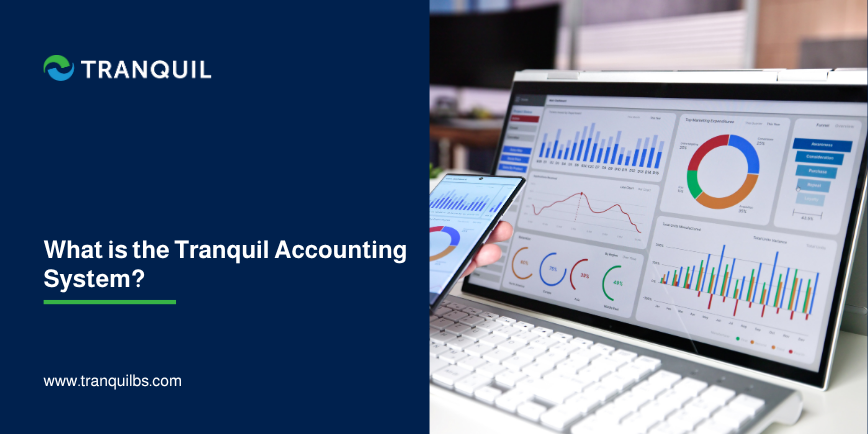
What Do You Mean by Bank Reconciliation?
The Accounts department of a company has numerous tasks to perform every single day – recording all transactions in the correct books of account, posting to the ledger.
ALSO READ: Important ERP Modules and Features
What is Bank Reconciliation?
A bank reconciliation statement is a synopsis of the banking and business transactions of an organization, and it compares and matches the bank account with the financial records of that organization.
This is done by checking the general ledger entries against the bank statements.
This statement contains all activities that affect a bank account for a particular time period, like deposits and withdrawals.
Preparing this statement helps businesses to detect bookkeeping mistakes, and is very valuable in preventing fraud.
ALSO READ: What is Goods Received Note and Why is it Important?
The Difference Between Cashbook and Bank Statement
The cash book balance shows the transactions recorded in the general ledger of a business.
The bank statement balance shows the cash balance as per the bank’s records.
This is the difference between the cashbook and bank statement balance.
Both are compared and matched to prepare the bank reconciliation statement.
The Importance of Bank Reconciliation Statements

For any business regardless of size or industry, bank reconciliation statements are extremely important.
The key objective of reconciling bank statements for small businesses is ensuring that the recorded balances in both the bank statement and in the ledger, match up; this helps manage and track the cash flow of the business more effectively.
ALSO READ: Complete Guide on Economic Order Quantity
Let’s look at why you must reconcile your bank statements in some detail:
- Fraud identification – this has to be a priority when reconciling your bank statements, you can try to verify if the cheques you issued changed in any way, or if any unauthorized cheques were issued. See if any deposits are missing, or if money was taken out or transferred to another account without the proper authorization.
- Validate data entry – this process will help you detect anomalies like duplicate entries, entry of wrong amounts, missing entries, and so on.
ALSO READ: What is Storage Cost of Inventory?
- Check the accuracy of financial statements – while not very common, banks can make errors too. Performing a bank reconciliation is a way of checking if your bank statement matches your ledger statements. Basically, it’s a way of ensuring that the general ledger postings and the bank transaction records are accurate.
- Minimizes fraud – proper bank reconciliation process can help prevent employees or others from committing financial fraud in your company.
- It can help identify potential delays in clearing cheques.
In case the ledger balance and bank balance don’t match up, you need to sit and examine both sets of records to find out the cause of the irregularities, and take corrective actions.
ALSO READ: Debit notes and Credit Notes
How Frequently Should Bank Reconciliation be Performed?

Ideally, bank reconciliation should be performed every day so that you can ensure that no financial irregularities or fraud can happen.
Larger organizations may perform this activity on a monthly basis; however, there is a possibility of multiple anomalies being detected, and these are likely to pile up increasingly – hence the case for daily reconciliation.
Reconciling bank statements enable the detection of irregular transactions that could simply be the result of accounting mistakes or deliberate fraud.
Bank reconciliation does not have to be a formal process – it can be carried out informally as well.
It is even recommended that individuals also perform bank reconciliation and verify that the balance as per their chequebook and the balance as per the bank statement is the same.
ALSO READ: What are the Key KPIs for ERP Implementation?
What Happens if You Do Not Reconcile Your Bank Statement
In case you do find any mismatch between the amounts and the accounts, you need to determine the causes and be able to explain them.
For example, you may have some cash in hand which is recorded in the ledger but will obviously not show in your bank statement.
But if there are anomalies which you are unable to explain, it means there is a problem; you need to rectify those before it blows out of proportion.
If you don’t reconcile your bank statement, employees or anyone else may commit fraud and you may find out too late.
Consumer bank accounts have more protection than businesses; ergo, it is critical that businesses detect abnormal activities in the early stages.
You cannot be sure that the bank will detect and correct abnormalities on their own.
ALSO READ: What is Capacity Requirement Planning?
How to Prepare a Bank Reconciliation Statement?

To perform the bank reconciliation properly, you need to have the current month and previous month’s bank statements, and the company ledger.
You can do this with a spreadsheet, or online templates, or use an ERP system like Tranquil with a robust finance and accounting module.
- Start with the closing balance of the previous month – this will be your opening balance for this month.
- Deduct any cheques issued but not yet cleared, and add deposits made but not yet credited. This is the adjusted cash balance.
- Add any interest earned on deposits, and deduct fees charged, penalties, etc. that were not yet recorded in your books of account.
- Check if the amounts of your deposits and cleared cheques are the same as what the bank records show. The final balance must be a match.
- If you detect any anomalies, think about what mistakes the bank has made or what you have missed in your records.
ALSO READ: What Every Business Should Know About CPQ?
Example of a Bank Reconciliation Statement
We have seen what is bank reconciliation; companies can recognize the source of errors and rectify them when anomalies are detected.
Let’s understand this with an example.
Company X recorded a closing balance of SAR 500,000 in their books of account. But the bank records show a closing balance of SAR 575,000.
Company X then investigates the matter.
They find out that a cheque issued to a supplier for SAR 50,000 hadn’t been presented for collection, and that a cheque was sent by a customer for SAR 25,000, which the accountant had inadvertently forgotten to record in the company’s books.
Company X adjusts its records, adding the missing deposit, and making a note that a cheque is outstanding.
ALSO READ: What is Product Bundling in Inventory Management?
Adjusting Balance per Books
The cash account balance in the financial records of a company may have to be adjusted too.
For example, you may incur a charge or fee for having an account open.
Usually, the amount is withdrawn from your account by the bank and it processes the fees automatically.
Hence, when you reconcile the bank statement, you need to ensure that there is a corresponding journal entry in your account books to account for these charges.
You also need to adjust the interest earned on your deposits.
ALSO READ: What Are the Stages of Fixed Asset Lifecycle?
It is normally deposited automatically into the account at pre-determined intervals like monthly, quarterly, or annually.
To account for this amount, you need to make an entry in your books of account that reflects the increased cash that has come in.
Once all the adjustments are made in the books, the bank balance amount and the balance as per your account books should be the same.
If the numbers are a match, it means that your bank reconciliation statement has been successfully prepared.
What are the Challenges In Reconciling Bank Statements?

Reconciling bank statements is an essential activity and it provides several benefits.
Performing daily reconciliations can be pretty challenging, especially when you are using manual or outmoded systems.
ALSO READ: What is Batch Picking?
These are the most common problems companies face:
1. Slow Processing of Data Input
When analysts manually login to banking systems to extract bank statements, and then access the company books of account, possibly from some accounting software, to reconcile it with the cash balance.
This necessitates a high degree of manual intervention, and the process may become slow, and also ties up employees in this cumbersome task.
2. Greater Possibility of Errors
Manual reconciliation can give rise to more errors; this defeats the purpose of improving accounting accuracy.
ALSO READ: What is Cross-Docking and How Does it Work?
3. No Central System for Auditing
Once you have reconciled the bank statement, it must be safely stored so that it can be used for audits in the future.
Maintaining multiple files becomes problematic when you are performing paper-based reconciliation statements.
The Need for Automation in Bank Reconciliation
More and more organizations are veering towards automation in accounting to ensure better accuracy.
Automation can eliminate possibilities of manual errors in data entry and bank reconciliation.
But how exactly will this happen? What is bank reconciliation software and how will it impact reconciliation?
Bank reconciliation software automates the bank reconciliation process, and allows accounting teams to access the ledger balance in real-time, items from the previous months, and compare invoices and bank statements.
These bank statement reconciliations can be electronically signed by the Accounts team and sent for approval to the relevant executive.
After approval, you can retain the data in your system database and use it as an audit trail.
ALSO READ: What is Dead Stock – How Can You Avoid It?
Benefits of Bank Reconciliation Software

1. Automation Brings in Efficiency
Most Finance and Accounts teams spend a great deal of time in data entry, attempting to glean irregularities, wasting time on monotonous and cumbersome tasks.
The bank reconciliation software automates this process, allowing your team to work on value-adding tasks, enhancing accuracy, minimizing audit risks, gaining insights, and having stricter control.
2. Better Internal Controls and Less Errors
The software improves internal control be enabling companies to see how the whole process works, increasing their confidence in its consistent smooth operation.
It helps to stop activities that are not authorized; you can set alerts to be sent in the event of abnormal changes and activities.
Eliminating manual data entry and adopting automation can help minimize errors, saving you money by detecting errors in real-time before they blow up.
ALSO READ: How Does Landed Cost Affect the Cost of Inventory?
3. Higher Transparency and Audit Trail
As all the reconciliation and data history is saved automatically by the software, it is useful to be used in audit trials and helps maintain compliance.
Historical data records help in checking cost of specific items in the past, and you can use this information to budget expenses in the future.
In fact, it will help you to budget more efficiently, and manage your organization’s funds much better.
4. Delegate Responsibilities
Reconciliation software can help you allocate responsibilities and also control access.
This will help your Accounts team to get a clear picture of their roles and responsibilities.
In case approval is needed for reconciliation, this will be assigned to the relevant executive automatically.
ALSO READ: Different Ways to Improve the Procurement Process
Keep your organization safe from financial errors and fraud, and allow employees to focus on more important tasks with our bank reconciliation software. Do schedule a demo with us at your convenient time to see for yourself how it works.



